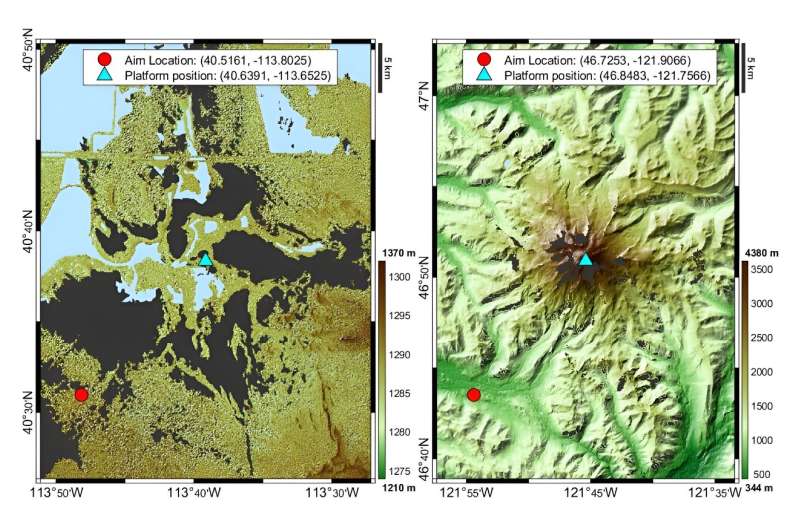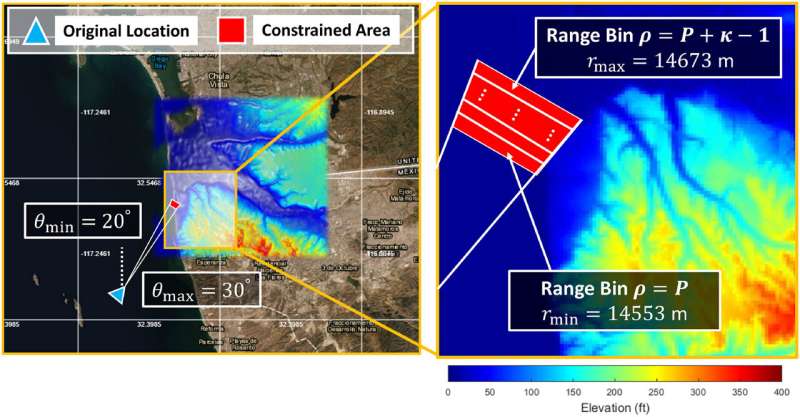This article has been reviewed according to Science X's editorial process and policies. Editors have highlighted the following attributes while ensuring the content's credibility:
fact-checked
preprint
trusted source
proofread
Enhancing adaptive radar with AI and an enormous open-source dataset

The world around us is constantly being flash photographed by adaptive radar systems. From salt flats to mountains and everything in between, adaptive radar is used to detect, locate and track moving objects. Just because human eyes can't see these ultra-high frequency (UHF) ranges doesn't mean they're not taking pictures.
Although adaptive radar systems have been around since World War II, they've hit a fundamental performance wall in the past couple of decades. But with the help of modern AI approaches and lessons learned from computer vision, researchers at Duke University have broken through that wall, and they want to bring everyone else in the field along with them.
In a new paper published July 16 in the journal IET Radar, Sonar & Navigation, Duke engineers show that using convolutional neural networks (CNNs)—a type of AI that revolutionized computer vision—can greatly enhance modern adaptive radar systems.
And in a move that parallels the impetus of the computer vision boom, they have released a large dataset of digital landscapes for other AI researchers to build on their work.
"Classical radar methods are very good, but they aren't good enough to meet industry demands for products such as autonomous vehicles," said Shyam Venkatasubramanian, a graduate research assistant working in the lab of Vahid Tarokh, the Rhodes Family Professor of Electrical and Computer Engineering at Duke.
"We're working to bring AI into the adaptive radar space to tackle problems like object detection, localization and tracking that industry needs solved."
At its most basic level, radar is not difficult to understand. A pulse of high-frequency radio waves is broadcast, and an antenna gathers data from any waves that bounce back. As technology has advanced, however, so too have the concepts used by modern radar systems.
With the ability to shape and direct signals, process multiple contacts at once, and filter out background noise, the technology has come a long way in the past century. But radar has come just about as far as it can using these techniques alone.
Adaptive radar systems still struggle to accurately localize and track moving objects, especially in complex environments like mountainous terrain.
To move adaptive radar into the age of AI, Venkatasubramanian and Tarokh were inspired by the history of computer vision. In 2010, researchers at Stanford University released an enormous image database consisting of more than 14 million annotated images called ImageNet.

Researchers around the world used ImageNet to test and compare new AI approaches that became industry standard.
In the new paper, Venkatasubramanian and his collaborators show that using the same AI approaches greatly improves the performance of current adaptive radar systems.
"Our research parallels the research of the earliest users of AI in computer vision and the creators of ImageNet, but within adaptive radar," Venkatasubramanian said. "Our proposed AI takes as input processed radar data and outputs a prediction of the target's location through a simple architecture that can be thought of as paralleling the predecessor of most modern computer vision architectures."
While the group has yet to test their methods in the field, they benchmarked their AI's performance on a modeling and simulation tool called RFView, which gains its accuracy by incorporating the Earth's topography and terrain into its modeling toolbox.
Then, continuing in the footsteps of computer vision, they created 100 airborne radar scenarios based on landscapes from across the contiguous United States and released it as an open-source asset called "RASPNet." The article on RASPNet is posted to the arXiv preprint server.
This is a valuable asset, as only a handful of teams have access to RFView. The researchers, however, received special permission from the creators of RFView to build the dataset—which contains more than 16 terabytes of data built over the course of several months—and make it publicly available.
"I am delighted that this groundbreaking work has been published, and particularly that the associated data is being made available in the RASPNet repository," said Hugh Griffiths, Fellow Royal Academy of Engineering, Fellow IEEE, Fellow IET, OBE, and the THALES/Royal Academy Chair of RF Sensors at University College London, who was not involved with the work.
"This will undoubtedly stimulate further work in this important area, and ensure that the results can readily be compared with each other."
The scenarios included were handpicked by radar and machine learning experts and have a wide range of geographical complexity. On the easiest side for adaptive radar systems to handle is the Bonneville Salt Flats, while the hardest is Mount Rainier. Venkatasubramanian and his group hope that others will take their ideas and dataset and build even better AI approaches.
For example, in a previous paper, Venkatasubramanian showed that an AI tailored to a specific geographical location could achieve up to a seven-fold improvement in localizing objects over classical methods. If an AI could select a scenario on which it had already been trained that is similar to its current environment, it should substantially improve in performance.
"We think this will have a really big impact on the adaptive radar community," Venkatasubramanian said. "As we move forward and continue adding capabilities to the dataset, we want to provide the community with everything it needs to push the field forward into using AI."
More information: Shyam Venkatasubramanian et al, Data‐driven target localization using adaptive radar processing and convolutional neural networks, IET Radar, Sonar & Navigation (2024). DOI: 10.1049/rsn2.12600
Shyam Venkatasubramanian et al, RASPNet: A Benchmark Dataset for Radar Adaptive Signal Processing Applications, arXiv (2024). DOI: 10.48550/arxiv.2406.09638

















